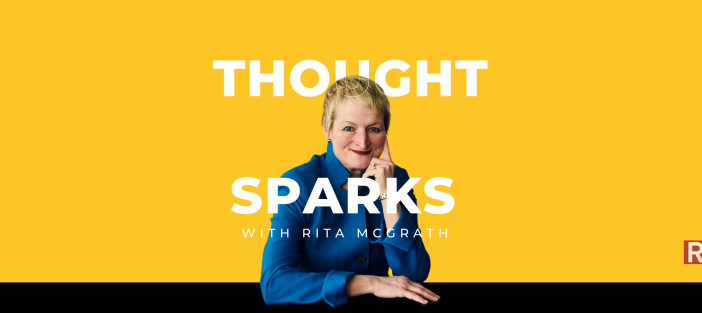
Since the days of Adam Smith, we have credited rising living standards with an improvement in productivity, typically manufacturing productivity. But as we are on the cusp of a revolution in digital, intelligent work, perhaps we need a new way of conceiving of productivity, particularly as it relates to the things that can’t necessarily be popped into an input/output equation.

From pins to AI, the missing role of ingenuity in our understanding of productivity
All the way back in 1776, Adam Smith in The Wealth of Nations established many of the assumptions we simply take for granted in economic logic. Among his more exciting arguments was that through the mechanism of the “invisible hand,” participants in capitalist systems can generate benefits for others by acting in their own self-interest. He also offers an interesting distinction between productive and unproductive labor. Productivity expert Scott Young notes that “Productive labor, according to Smith, was any work which fixed itself in a tangible object. Unproductive labor, was any work where the value was consumed as soon as it was created. Smith contrasted the role of laborers in a manufacturing plant (productive work) with the tasks of a servant (unproductive work).
The magic of increasing productivity, further, was in the division of labor, in which people could specialize on tasks and learn to do them better, permitting the whole system to create greater output for the same or even fewer inputs, the textbook definition of greater productivity.
With greater productivity comes the potential for producing more than is needed for basic human sustenance. That in turn creates the potential for a market, in which one set of people can trade the surplus with others, creating greater incentives to further increase productivity, and so on. And by focusing on their part of the system, learning practices lead to improvement, discoveries and innovation. This is why free trade, by opening up larger markets, is often seen as beneficial to all participants.
There is, however, a part of Smith’s writing that to me has been rather overlooked. This is his emphasis, as James R. Otteson of Yeshiva University explains, on the role of human ingenuity. Those societies that gave people the scope to use their ingenuity and entrepreneurial inclinations to improve what they were working on flourished. Those that did not languished.
Are our most important jobs the most unproductive?
Ironically, by Smith’s own definition, many of the most important jobs in any society – teaching, providing healthcare, looking after children – are unproductive. They are also subject to increasing costs due to something called the “Baumol effect” after the late economist William Baumol. He found that even though doctors, professors, and symphony artists were no more “productive” over time (it still takes 4 musicians 40 minutes to play Mozart, for instance), that their wages nonetheless went up. This happens because rising wages in high-productivity parts of the economy lead to those in less productive parts earning more as well, lest those essential jobs remain vacant. Baumol thought of this as a “cost disease,” that dragged down productivity across the economy, and contributing to the growth of those low productivity sectors over time.
Because of the way we look at productivity, we’ve created a peculiar blind spot: the things that make life truly worth living are precisely the things we struggle to make more productive. Art galleries, symphony halls, literature, museums, experiential learning, cultural festivals—these represent the flowering of human civilization, yet they remain stubbornly resistant to our understanding of economic value.
This creates what I call the “cultural productivity paradox.” The arts and cultural sector contributed $1.17 trillion to the U.S. economy in 2023, representing 4.2% of GDP, yet we continue to view cultural activities as economic afterthoughts rather than fundamental drivers of human flourishing. We’ve become extraordinarily adept at measuring the efficiency of manufacturing widgets while remaining mystified by how to quantify the value of a child’s first encounter with Shakespeare or the ripple effects of a community music program.
The Golden Age Vision
Economist Carlota Perez offers a compelling framework for understanding this paradox through her concept of technological revolutions and golden ages. Perez traces five boom-and-bust cycles of technological innovation spanning the past three centuries, each following a similar pattern of installation, crisis, and eventual golden age deployment. The Victorian boom, the Belle Époque, and the post-war golden age all shared a common characteristic: they weren’t just periods of economic growth, but eras when societies found ways to deploy their technological capabilities in service of broader human flourishing.
According to Perez’s theory, we’re currently about 45 years into a technological surge that began in the early 1970s—potentially the longest such cycle we’ve seen. The information and communications technology revolution has installed vast productive capacity, but we’re still struggling to deploy it in ways that create broadly shared prosperity and human enrichment.
Where we are at the moment in the transition away from the economic and technological system that every person alive today has come to take for granted is potentially re-thinking productivity itself. In a world that leaves “mass” markets behind, where products are replaced by services and in which a logic of experiences replaces a logic of extraction, consumption and obsolescence, the role of services will be critical and central. We need new ways of understanding what value looks like in that world.
The AI Opportunity
Here’s where artificial intelligence presents a fascinating possibility. Unlike previous technological revolutions that primarily automated physical labor, AI has the potential to automate cognitive functions across service sectors, potentially freeing human capacity for precisely the kinds of activities we struggle to measure.
Recent analysis shows that revenue growth in AI-exposed industries has nearly quadrupled since 2022, with wages rising twice as quickly in those industries most exposed to AI compared to those least exposed. This suggests we’re beginning to see the productivity gains that could enable a boom, even in the very sectors in which observers have been highly skeptical.
Consider the possibilities: AI-assisted administrative functions could free teachers to focus on mentoring and inspiration, a philosophy about education that is core to Ben Nelson’s vision at the Minerva Project. This is already leading some to completely re-imagine learning, as in the two hour school day. Automated data analysis could give healthcare workers more time for patient interaction and care coordination, as Paul LeBlanc has argued. Intelligent systems could handle routine legal research, allowing lawyers to concentrate on advocacy and justice. Smart logistics could optimize resource distribution, creating abundance that enables broader cultural participation.
The services sector—encompassing everything from education and healthcare to hospitality and cultural production—has historically shown lower measured productivity growth than manufacturing. But this may reflect our measurement limitations rather than genuine inefficiency. Research shows generative AI could improve productivity in customer service by 14% per hour while reducing time spent handling issues by 9%, suggesting significant potential for enhancement in human-centered work. The key insight is that AI’s impact on services may not be about replacing human judgment and creativity but augmenting human capacity for the very activities that create meaning and connection. Rather than seeing cultural activities as drains on economic productivity, we might begin to understand them as the ultimate output of a truly productive society.
The Inflection Point
As Perez notes, “the sociopolitical form we give to technology will define whether we enter a golden age”. The choice isn’t predetermined. We could use AI to create a hyper-quantified society where every human interaction is optimized for measurable outcomes. Or we could deploy it to create the abundance and efficiency that enables a flourishing of precisely those unmeasurable aspects of human experience that make life worth living.
The signs of possibility are already emerging. The arts economy represented a new high-water mark of 4.4% of GDP in 2021, demonstrating resilience and growth even through disruption. Virtual reality is creating new forms of cultural experience. AI is enabling personalized learning at scale. Digital platforms are democratizing access to cultural creation and consumption.
Toward a golden age?
For leaders navigating this transition, the challenge is learning to hold two seemingly contradictory truths: we must continue to drive measurable productivity improvements while simultaneously creating space for the immeasurable aspects of human flourishing that define golden ages. This means rethinking success metrics to include cultural vitality, community engagement, educational depth, and creative output alongside traditional economic indicators. It means investing in the infrastructure of human development—not just broadband and data centers, but concert halls and maker spaces, libraries and community gardens.
Most importantly, it means recognizing that the ultimate test of any technological revolution isn’t whether it makes our processes more efficient, but whether it makes our lives more fully human. The great productivity paradox may turn out to be no paradox at all, but rather a reminder that true productivity includes producing the kind of society we actually want to live in. The question isn’t whether AI will boost productivity—the evidence suggests it will. The question is whether we’ll use that productivity to create more widgets or more wonder, more optimization or more opportunity for human flourishing.
We have the potential to create a society in which the ingenuity Adam Smith spoke about can be put to work creating a world that works better for more of us.
